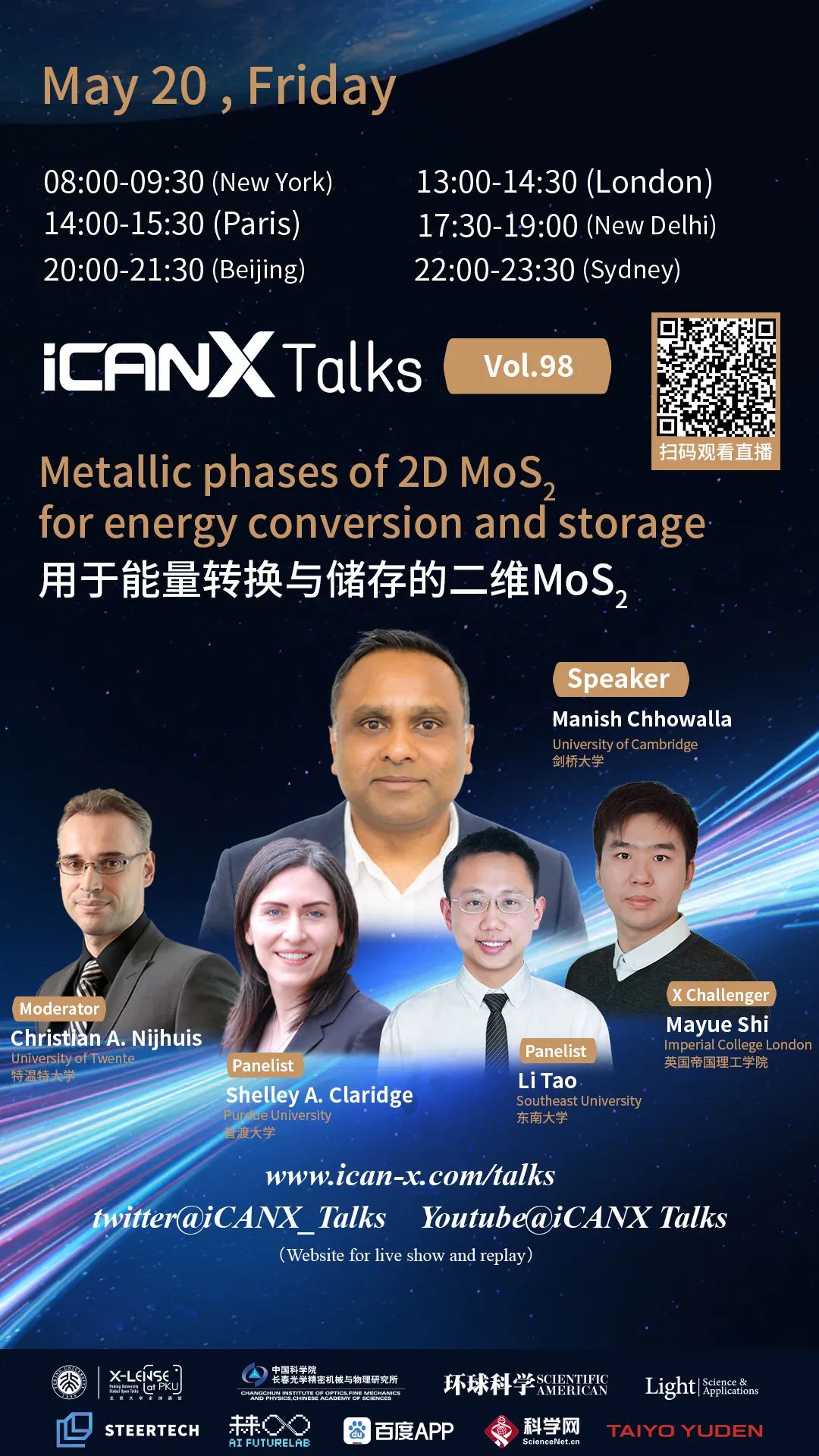[Lecture] Metallic phases of 2D MoS2 for energy conversion and storage
May. 20, 2022
Theme:
Metallic phases of 2D MoS2 for energy conversion and storage
Speaker: Manish Chhowalla,University of Cambridge
Moderator: Christian A. Nijhuis, University of Twente
Panelist:
Shelley A. Claridge, Purdue University
Li Tao, Southeast University
Time: 20:00-21:00, May 20, 2022 (GMT+8)
Venue: Scan the QR code
Abstract:
Batteries based on new chemistries that can store more energy than state-of-the-art lithium-ion devices will play an important role in enabling the energy transition to net zero carbon emission. Our previous work has shown that compact electrodes assembled from monolayered nanosheets of metallic 1T phase MoS2 are highly conductive, lyophilic, and are catalytically active. I will briefly describe the different phases of 2D MoS2 and their catalytic properties – focusing on the role of sulfur vacancies and strain. Here we report the realization of high-performance lithium-sulfur batteries using metallic 1T phase of two-dimensional molybdenum disulfide as binder-free conducting cathodes for hosting sulfur. The attributes of metallic 2D MoS2 lead to > 85% utilization of sulfur due to improved adsorption of lithium polysulfides, enhanced Li+ diffusivity, accelerated electrochemical reaction kinetics and superior electrocatalytic activity for polysulfide conversion. We have translated these properties into practical pouch cells, achieving areal capacities of 8.21 ± 0.07 mAh cm-2 and capacity retention in excess of 85% over 200 cycles. The metallic MoS2-based ampere-hour-scale (1.3 ± 0.05 Ah) pouch cells can deliver gravimetric energy density of 402 Wh kg-1 and volumetric energy density of 721 Wh L-1. These metrics compare exceptionally favourably with current state-of-the-art in Li-S batteries. Our results provide unique insights into new designs for Li-S cathodes based on electrocatalytically active and conducting two-dimensional (2D) materials.
Biography:
Manish Chhowalla is the Goldsmiths’ Professor of Materials Science at the University of Cambridge. His research interests are in the fundamental studies of atomically thin two-dimensional transition metal dichalcogenides (TMDCs). In particular, his group studies the optical and electronic properties of different phases of 2D TMDCs. Prof Chhowalla is a Fellow of the Materials Research Society, Institute of Physics and the Royal Society of Chemistry. He was the founding Editor in Chief of Applied Materials Today and is now the Associate Editor of ACS Nano. He has been on the Clarivate Highly Cited Researchers since 2016.
Source: iCANX

